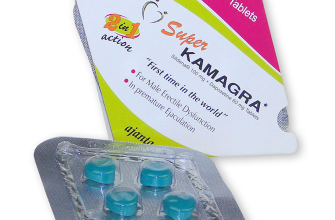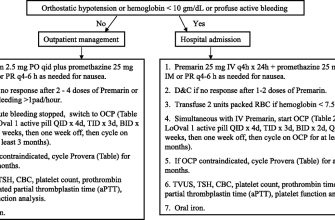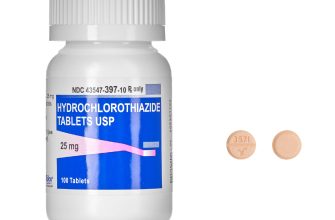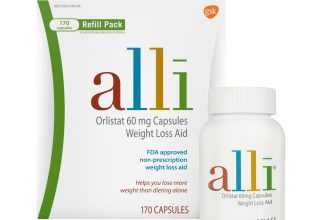Seek out wild-simulated ginseng; it offers the best balance of quality and sustainability. Cultivated ginseng lacks the potent compounds found in wild plants, while truly wild ginseng is increasingly rare and protected.
Wisconsin’s unique climate and soil create ideal conditions for ginseng growth, resulting in roots rich in ginsenosides, the active compounds responsible for its purported health benefits. Look for roots with a firm texture and a light, earthy aroma; avoid those that are mushy or have a strong, musty odor.
Consider purchasing from reputable growers or harvesters committed to sustainable practices. Certification programs, like those focusing on organic farming or sustainable harvesting, can help ensure the ginseng’s origin and quality. Remember to check labels carefully for details on growing methods and origin.
Proper storage is key. Keep your ginseng roots in a cool, dark, and dry place, ideally in an airtight container to preserve their potency and prevent degradation. This simple step significantly extends their shelf life and maintains their beneficial properties.
Beyond its purported medicinal qualities, Wisconsin ginseng offers a connection to the region’s unique natural heritage. Supporting local growers protects this valuable resource and ensures the future availability of this remarkable plant.
- American Wisconsin Ginseng: A Comprehensive Guide
- Cultivation Techniques
- Identifying Authentic Wisconsin Ginseng
- Uses and Benefits
- Market and Pricing
- Identifying Authentic Wisconsin Ginseng
- Cultivating Wisconsin Ginseng: A Practical Approach
- The Market for Wisconsin Ginseng: Sales and Regulations
- Grading and Pricing
- Legal Requirements and Sustainability
- Market Trends and Future Prospects
American Wisconsin Ginseng: A Comprehensive Guide
Wisconsin ginseng commands a premium price due to its superior quality. Its cultivation requires specific conditions: shaded, well-drained soil rich in organic matter. Successful growers diligently manage soil pH, moisture levels, and weed control throughout the growing season.
Cultivation Techniques
Plant ginseng seeds in the fall; they require a period of cold stratification for germination. Maintain consistent soil moisture via drip irrigation. Effective pest management involves careful monitoring and targeted application of organic controls; deer fencing is crucial for protection. Harvesting occurs after six years, when roots reach their full size and potency. Proper drying techniques are critical to preserving the ginsenosides, the active compounds responsible for ginseng’s medicinal benefits. Aim for slow, even drying in a well-ventilated area to avoid mold and preserve quality.
Identifying Authentic Wisconsin Ginseng
Genuine Wisconsin ginseng features distinctive characteristics. Roots are typically thick, fleshy, and exhibit a characteristic branching pattern. The color ranges from light yellow to a pale beige. Look for a distinct earthy aroma. Be wary of imitations; only certified growers can guarantee authenticity. Contact your local USDA office to find certified producers in your area.
Uses and Benefits
American ginseng is used as a dietary supplement. Many believe it enhances energy levels and supports immune function, though more research is needed. Common forms include dried root, powdered extract, and tinctures. Consult a healthcare professional before incorporating ginseng into your health regime, especially if you have pre-existing medical conditions or are taking medications.
Market and Pricing
Prices vary based on root size, quality, and age. Larger, well-preserved roots fetch higher prices. The market for Wisconsin ginseng is largely international, with significant exports to Asia. Demand consistently outpaces supply, contributing to the product’s high value. Direct sales to buyers or participation in farmers markets are ideal for optimizing profitability.
Identifying Authentic Wisconsin Ginseng
Check for the Wisconsin Ginseng Certification Program seal. This guarantees the ginseng was harvested legally and sustainably in Wisconsin.
Examine the root. Authentic Wisconsin ginseng has a characteristic, slender, and somewhat spindly root with multiple small branch roots. Avoid thick, stubby roots, which may indicate cultivation outside Wisconsin or improper harvesting practices.
Note the color. Wild Wisconsin ginseng roots are typically light yellowish-brown to a creamy tan. Avoid roots that are excessively dark or have unnatural coloring.
Feel the texture. The root should feel firm and somewhat dry to the touch. Avoid roots that are mushy or overly pliable, indicative of poor storage or decay.
Inspect the root’s shape and size. Wild ginseng roots exhibit unique shapes, unlike the uniform roots often seen in cultivated ginseng. Wisconsin ginseng roots usually are 4-6 inches long with a maximum width of 1 inch and are rarely large.
Look for the “beard.” Mature ginseng roots often display thin, fibrous rootlets, sometimes called a “beard,” at the top. This is a natural feature of wild ginseng.
Consider the source. Purchase ginseng from reputable dealers who can provide verifiable documentation of its origin and harvesting methods. Be wary of unusually low prices.
If purchasing dried ginseng, examine for signs of mold, rot, or pest infestation. The aroma should be earthy and slightly sweet; avoid pungent or off-putting odors.
Cultivating Wisconsin Ginseng: A Practical Approach
Begin by selecting a shaded area with well-drained, fertile soil. Aim for a pH between 5.5 and 6.5.
Prepare the soil thoroughly. Remove weeds and rocks. Consider incorporating compost to improve soil structure and nutrient content.
- Use certified ginseng seed. Source from reputable suppliers.
- Pre-treat seeds by stratifying them for at least three months in moist, cool conditions (around 40°F).
- Plant seeds in spring or fall, about 1/4 inch deep, spacing them 6-12 inches apart.
Maintain consistent soil moisture. Regular watering is crucial, especially during dry spells. Use mulch to conserve moisture and suppress weeds.
- Protect your ginseng plants from pests and diseases. Regularly inspect for signs of damage.
- Consider using organic pest control methods, such as beneficial insects or neem oil.
Harvest ginseng roots after 5-7 years. Dig carefully to avoid damaging the roots. Clean and dry the roots thoroughly before storage.
- Store dried roots in a cool, dark, and dry place.
- Ensure proper ventilation to prevent mold growth.
Rotate your ginseng crop to different planting areas every few years to prevent soil depletion and disease buildup. Observe your plants closely and adjust your approach as needed based on your observations and local climate.
The Market for Wisconsin Ginseng: Sales and Regulations
Wisconsin ginseng commands a premium price, reaching upwards of $800 per pound for wild ginseng and $400-$600 for cultivated roots. Sales primarily occur through dedicated dealers, auctions, and increasingly, online marketplaces. However, navigating these channels requires knowledge of grading standards and regulations.
Grading and Pricing
Wisconsin ginseng is graded based on factors including root size, shape, and age. Larger, older roots fetch higher prices. Dealers use specific scales; understanding this system is vital for maximizing returns. Accurate weight measurements are also critical. Misrepresentation can lead to penalties and loss of sales. Seek advice from experienced dealers regarding proper grading practices. Attend local ginseng auctions to observe market trends and pricing strategies.
Legal Requirements and Sustainability
Harvesting wild ginseng in Wisconsin is subject to stringent regulations. Permits are required, and harvest seasons are strictly enforced. Harvesting methods must adhere to sustainable practices, ensuring the long-term health of ginseng populations. Cultivated ginseng production is less regulated but still requires compliance with specific agricultural practices to maintain quality standards and avoid contamination. The Wisconsin Department of Natural Resources provides comprehensive guidelines and resources. Always adhere to these guidelines to ensure legal compliance.
Market Trends and Future Prospects
Demand for Wisconsin ginseng remains strong, driven by its reputation for high quality and unique characteristics. However, market fluctuations do occur, influenced by factors including global supply and demand, economic conditions, and harvesting yields. Diversifying sales channels and building relationships with reputable buyers can mitigate these risks. Investing in sustainable cultivation practices strengthens long-term market position. Consider exploring export markets and marketing strategies to broaden consumer reach.










